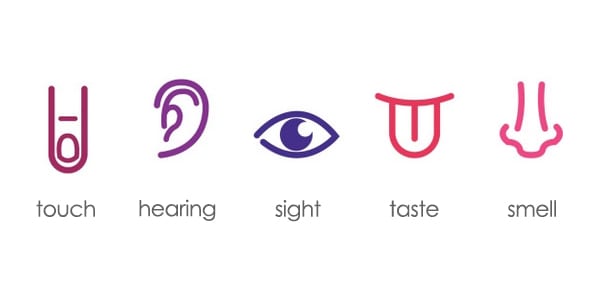 Our senses are what connect us to the world. They are the tools we use to pick up cues, trigger an emotion and make decisions.
Our senses are what connect us to the world. They are the tools we use to pick up cues, trigger an emotion and make decisions.
As a lover of all things unique, I am conscious of the ways I use all of my senses to understand the world around me—and how brands are tapping in to them to connect with me.
How the Five Senses Affect Brands:
To get a better sense of how brands are effectively using multi-sensory marketing techniques, I’ve broken down this branch of marketing into five examples that explore sight, hearing, taste, smell and touch in new ways (click to tweet).
I Can See the Future!
Marketers have long relied on images to convey messages and stir emotions in consumers’ minds. However, as the world becomes increasingly digitized, traditional print and web imagery aren’t going to cut it. To leave a lasting impression, marketers will use virtual and augmented realities to take consumer journeys to the next level.
The hotel and travel industry are pioneers in using VR technology—putting customers directly in the driver’s seat of a visually branded experience—but healthcare and fashion are quickly jumping on this virtual ride.
Can You Hear the Ocean?
I recently learned of a restaurant that incorporates sound marketing into the dining experience with a visually breathtaking plate featuring a realistic-looking beach made of tapioca and breadcrumbs with an iPod accompaniment—allowing diners to listen to the sounds of crashing waves while they eat.
As a lover of the beach, the sound of the rolling waves combined with the smells and tastes of the sea are enough to transport me back to some of my favorite vacations.
That was Delicious!
Taste is a low-hanging fruit (excuse the pun) sense for companies in the food and spirits industries. Our taste buds are powerful and can affect how we think about brands, which is why marketers have long used taste marketing techniques to attract customers into their brick and mortar stores. From free samples to guided tastings, allowing customers to try before they buy is a powerful way to motivate purchases. Of all the senses, taste relies most on the other four to paint a complete picture, so be sure to compliment any tasting with other elements to complete the full sensory experience.
That Smells So Good!
Great examples of stimuli-triggered, scent marketing can be found everywhere from milk ads that pump in the scent of fresh-baked chocolate chip cookies, to movie theaters integrating effects like movement, smoke and scents into theaters to create an even more immersive 4D experience.
From the smell of fresh flowers blooming to marshmallows being roasted on an open fire, I believe scent marketing is set to transform the “Hollywood experience” within a few years.
What a Touching Moment.
If you were born in the 70s you probably remember mood rings. Mood rings would change in color based on the temperature of the wearer’s finger.
I recently read how one major airline took the mood ring concept a step further with “Happiness Blankets” to determine how comfortable customers are during flights. The airline enhances the customer experience using hi-tech headbands integrated with neuro-sensors. The wearable devices analyze people’s brainwaves and transmit data over Bluetooth to special blankets containing fiber optics. When customers are calm the blankets will turn blue, when they’re stressed, they turn red. Perhaps TMI, but fascinating nonetheless.
The Future of Multisensory Marketing:
All senses have their place, and communicators need to tap into all of their audiences’ senses to help them emotionally connect to an experience. If marketers want their stories to resonate, they must go beyond the visual.
It is important to remember that everyone is different when it comes to which sense(s) they rely on to validate their experience. Furthermore, what dominates a consumer’s attention today can be very different tomorrow.



